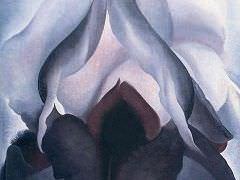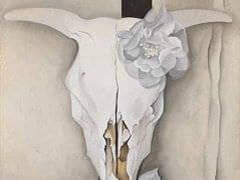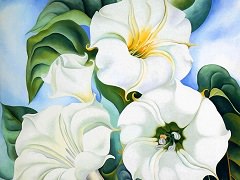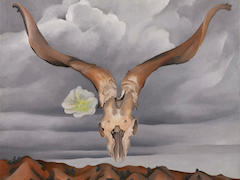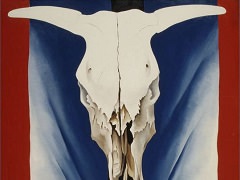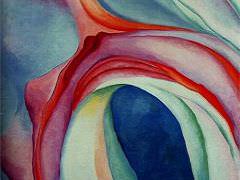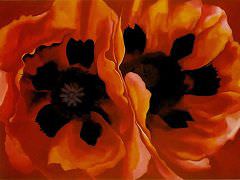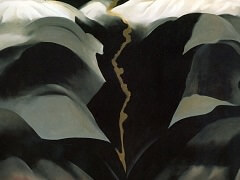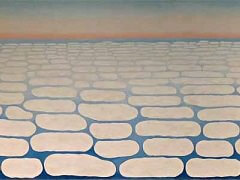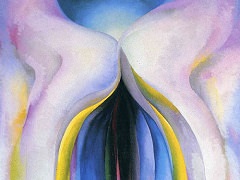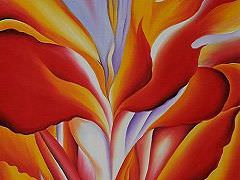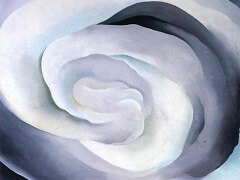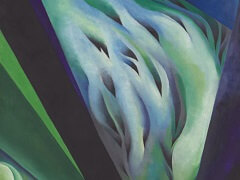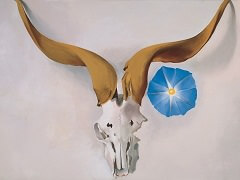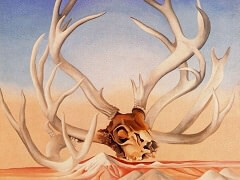Pattern of Leaves, 1923 by Georgia O'Keeffe

Produced in the early period when O'Keeffe was exploring the idea of enlarging the central motif, Pattern of Leaves depicts fragments of foliage magnified and cropped to fill the canvas. The results of O'Keeffe's dispassionate observation are at once coolly distant and psychologically intense.
As a significant statement in her emerging style, Pattern of Leaves reflects the crux of O'Keeffe's art: the fusion of objectivity and abstraction as a means of expressing her inner emotions. O'Keeffe transforms the lines and colors of the objective form - a leaf - into an abstract composition. The central maple leaf is placed diagonally across other layered leaves, whose silvery gray, white, and light green hues create an ambiguous space. The red leaf is set off against the pale background; however, a glimpse of yellow through a tear in the leaf pierces its surface. O'Keeffe often used fissures and tears in her leaf and flower compositions both as a dramatic formal device and as veiled reference to events in her life or to her state of mind. Thus, the jagged rip against the leaf's grain of growth serves as a compositional accent and also touches the emotions.
The sources for her characteristic style are diverse, although they are most closely linked to her training under Arthur Wesley Dow, whose theories emphasized the importance of simplifying and isolating form to reveal its essence. The exercises Dow gave his students - such as taking a leaf-like form and fitting it into a square in varied ways - provided a framework for O'Keeffe's approach to composition throughout her career. Her mature style reaffirms Dow's belief of the importance of shape to the spirit of an object. Indeed, Pattern of Leaves may have been inspired by one of Dow's exercises, which he published in his book Composition, and reveals his influence on O'Keeffe in her approach to her subject and the process by which she made her formal choices.

